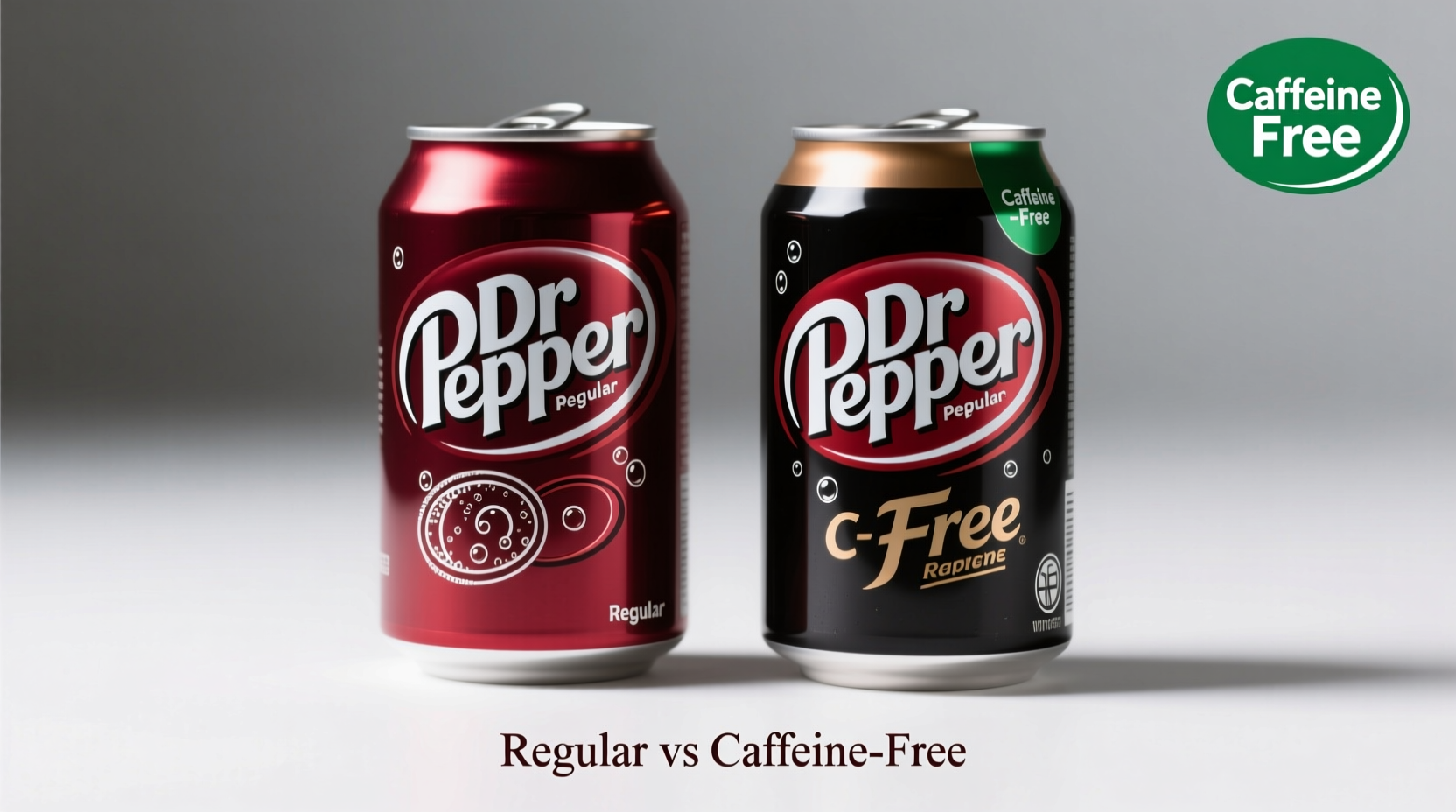Understanding Dr Pepper's Caffeine Content: Facts You Need
When you reach for a cold Dr Pepper, knowing exactly what's in your can matters. The classic Dr Pepper formula contains 41 milligrams of caffeine per 12-ounce serving, according to the official Dr Pepper ingredients page. This puts it ahead of many cola competitors while staying well below your morning coffee.

How Dr Pepper Compares to Other Popular Beverages
Understanding where Dr Pepper stands among other drinks helps put its caffeine content in perspective. The table below shows caffeine levels across common beverages based on 12-ounce servings:
| Beverage | Caffeine Content (per 12oz) | Equivalent to Dr Pepper |
|---|---|---|
| Regular Dr Pepper | 41mg | 100% |
| Coca-Cola | 34mg | 83% |
| Pepsi | 38mg | 93% |
| Mountain Dew | 54mg | 132% |
| Brewed Coffee | 140mg | 341% |
| Black Tea | 47mg | 115% |
This comparison shows Dr Pepper sits in the middle range for caffeinated sodas—stronger than classic colas but milder than citrus-flavored energy sodas. For reference, the U.S. Food and Drug Administration considers 400mg daily safe for most healthy adults, meaning you'd need nearly 10 regular Dr Peppers to reach that threshold.
The Role of Caffeine in Dr Pepper's Signature Flavor
Caffeine isn't just added for stimulation—it plays a crucial role in Dr Pepper's distinctive taste profile. As a flavor enhancer, caffeine contributes to the beverage's characteristic bitter note that balances the 23 fruit flavors in the secret formula. Food scientists at major beverage companies, including Dr Pepper's parent company Keurig Dr Pepper, confirm that removing caffeine significantly alters the intended flavor experience.
Unlike many sodas that use caffeine primarily as a stimulant, Dr Pepper incorporates it as an integral flavor component. This explains why the caffeine-free version requires additional flavor adjustments to maintain the recognizable taste.
Tracking Caffeine in Dr Pepper Through the Years
Dr Pepper's relationship with caffeine has evolved significantly since its creation in 1885. Understanding this timeline helps explain current formulations:
- 1885-1950s: Original formula contained kola nut extract, a natural caffeine source along with other botanicals
- 1960s-1980s: Shifted to purified caffeine for consistent flavor and dosage control
- 1990s: Introduction of caffeine-free Dr Pepper to meet growing consumer demand
- 2006: Launch of Diet Dr Pepper with caffeine (41mg/12oz)
- 2018: Introduction of Dr Pepper Zero Sugar, formulated without caffeine
This evolution reflects changing consumer preferences and regulatory environments. The Center for Science in the Public Interest has tracked these shifts as part of broader industry trends toward transparency in caffeine labeling.
Choosing the Right Dr Pepper for Your Caffeine Needs
Not all Dr Pepper varieties contain caffeine. Here's what you need to know when selecting your can:
Caffeinated Dr Pepper Options
- Regular Dr Pepper (41mg/12oz)
- Diet Dr Pepper (41mg/12oz)
- Dr Pepper Cherry (41mg/12oz)
- Dr Pepper Cream Soda (38mg/12oz)
Caffeine-Free Dr Pepper Options
- Dr Pepper Zero Sugar (0mg caffeine)
- Caffeine-Free Diet Dr Pepper (discontinued in most markets but still available in some regions)
- Dr Pepper Ten (0mg caffeine, though discontinued in 2019)
Always check the nutrition facts panel, as formulations can vary by region and change over time. The most reliable indicator is the ingredients list—if it includes "caffeine," the product contains it.
Who Should Monitor Their Dr Pepper Caffeine Intake
While 41mg per serving falls within safe limits for most people, certain groups should exercise caution:
- Children and adolescents: The American Academy of Pediatrics recommends children under 12 avoid caffeine entirely, while teens should limit to 100mg daily
- Pregnant women: Most health organizations suggest limiting to 200mg daily
- Caffeine-sensitive individuals: Those experiencing anxiety, insomnia, or heart palpitations may need to avoid even moderate caffeine sources
- People on certain medications: Caffeine can interact with antibiotics, antidepressants, and heart medications
The Mayo Clinic emphasizes that individual tolerance varies significantly—some people feel effects from small amounts while others metabolize caffeine quickly with minimal impact.
Practical Tips for Managing Caffeine Consumption
Whether you're monitoring your caffeine intake for health reasons or personal preference, these strategies help:
- Read labels carefully: Look for "caffeine" in the ingredients list—not all products state caffeine content on the front panel
- Consider timing: Avoid caffeinated Dr Pepper within 6 hours of bedtime if you're sensitive to caffeine
- Hydrate strategically: Balance each caffeinated beverage with an equal amount of water to maintain hydration
- Try gradual reduction: If cutting back, alternate regular and caffeine-free versions to minimize withdrawal symptoms
- Check restaurant servings: Fountain drinks often contain more than 12 ounces—a standard 16oz fountain Dr Pepper delivers about 55mg of caffeine
Remember that caffeine metabolism varies—genetic factors influence how quickly your body processes it. Some people can enjoy an evening Dr Pepper with no sleep disruption, while others need to cut off caffeine by early afternoon.











 浙公网安备
33010002000092号
浙公网安备
33010002000092号 浙B2-20120091-4
浙B2-20120091-4